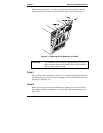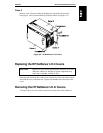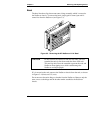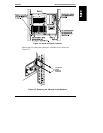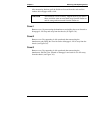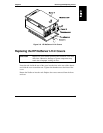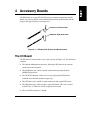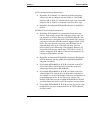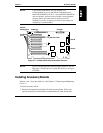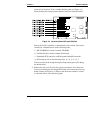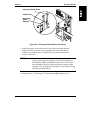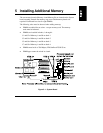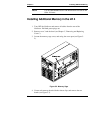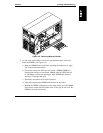
Chapter 4 Accessory Boards
18
SCSI A has the following characteristics:
• By default, SCSI channel A is connected to the hot-swap mass
storage cage that was shipped with the NetServer. (For the HP
NetServer LH 4, SCSI A is connected to the right cage; for the HP
NetServer LH 4r, SCSI A is connected to the lower drive cage.
• By default, the integrated HP NetRAID subsystem is enabled for
SCSI A.
SCSI B has the following characteristics:
• By default, SCSI channel B is connected to the non-hot-swap
devices. If you install a second hot-swap mass storage cage, you
can connect it to SCSI B. There are two SCSI B connectors: one
SCSI B connector is designed for the single-ended (SE), non-hot-
swap devices; the other SCSI B connector supports Ultra2 (LVD)
drives. The two connectors are on the same SCSI bus, but are
separated electrically by an LVD to SE converter. The slow
devices on SE are not affected by LVD operation. However, SE
devices and LVD devices cannot share a SCSI ID. To resolve a
conflict, change the SCSI address of the non-hot-swap device by
resetting its SCSI address switches.
• By default, the integrated HP NetRAID subsystem is disabled for
SCSI B. However, you may enable the integrated HP NetRAID
subsystem on SCSI B.
• If you enable HP NetRAID for SCSI B, all non-hot-swap SCSI
devices and all hot-swap drives in the second hot-swap mass
storage cage become part of HP NetRAID.
• If you enable HP NetRAID for SCSI B, you cannot use devices
with multiple LUNs (logical units) in the non-hot-swap shelves.
An example of a device with multiple LUNs that you cannot use is
an autoloader tape device. If you want to use a device with
multiple LUNs and you want to enable HP NetRAID for SCSI B,
you must connect the device to a SCSI controller accessory board.
• If you enable HP NetRAID for SCSI B, and you plan to use a tape
backup device, you must connect the device to a SCSI controller
accessory board.



